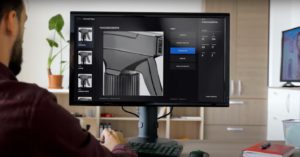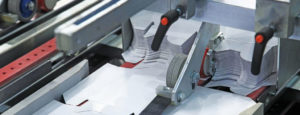Automation 4.0
Growing up in modern society, I am sure that most of us have heard of the Industrial Revolution and the drastic effect it has had on society. It’s now 2021 and the Fourth Industrial Revolution has now fully descended upon us, promising even greater changes that nobody can accurately predict.
Instead of trying to predict the future or being afraid of the unknown, I would like to explore the idea of the Fourth Industrial Revolution, also aptly called Automation 4.0, through the lens of opportunity.
Automation 4.0 is characterized by the integration of human and machine processes (WEF) also known as cyber-physical systems. To put it simply, it defines the trend of integrating technologies such as the Internet of Things and Cloud Computing with existing manufacturing practices and technologies to ultimately create a smart factory. An example of such a solution would be robotic arms equipped with computer vision capabilities, to streamline and increase effectiveness across manufacturing lines today.
Recent trends
Consumers are always looking for something new and personalized with over 80% of consumers being more inclined to purchase from a brand that provides personalized services (Epsilon). This has led to an increasing need for businesses to focus on customer-centricity to gain a competitive edge with a similar trend existing in the manufacturing sector. Products and services are evolving to become highly personalized to suit the customer’s needs. While having such a business model might have robust financial appeal, it generates inefficiencies and thus opportunities throughout the manufacturing value chain.
Despite the need for skilled labor increasing due the added complexity of tasks, the labor market is not cooperating. The labor market is experiencing a ‘blue-collar drought’, with 77% of manufacturers expressing difficulties in attracting and retaining workers. Due to the perceived negative image of manufacturing jobs as being outdated, fewer people are pursuing an education and eventually a career in manufacturing. Worsening labor shortages are pushing manufacturing companies to hasten their modernisation process and invest in automation.
In a recent article by Kearney, industrial automation is predicted to receive explosive growth and potentially become a $250 billion market by 2035. One of the main contributing factors for this prediction is the hunger for manufacturers to improve productivity to tackle the evolving consumer landscape.
Challenges and Opportunities
From the development of a product to the distribution of orders, every single intermediate stage presents a plethora of opportunities that can be seized and exploited. Here are some of the challenges that have been identified in the manufacturing sector:
Smart Production
With the advent of hyper-personalization, companies are facing problems in manufacturing as the requirements from customers are varied and highly customized. There is an increased need for manufacturers to be flexible and agile due to the ever-changing client’s needs. However, the current approach to the planning and development of the production lines runs contrary to this notion.
The main culprit is the inability to reuse and integrate components of the production line efficiently. Without a standardized automation system that guides the design and planning phase of a production line, components are simply designed to be dedicated to a singular project.
Currently, traditional manufacturing follows a linear approach with most production lines dedicated to a singular project. When a project is completed or there are changes in a client’s request, all the components in the entire production line become obsolete. This results in the wastage of both time and resources.

Software and robotics company Arculus transforms manufacturing with its modular production platform.
This presents an opportunity that is ripe for start-ups to leverage on. An example of such a startup would be Arculus, a start-up that is based in Germany, that has developed a “modular production platform” in response to the inefficiencies caused by traditional linear manufacturing. Arculus integrates both hardware and software to design modules where individual tasks can be performed. These modules can be assembled dynamically based on the customers’ requirements. This increased flexibility reduces cost and improves productivity. In 2020, Arculus raised over $17 million in Series A investment, reflecting an increased interest in the technological shift from linear manufacturing to bespoke manufacturing.
Smart Inspection
Further down the production line, the lack of an automated inspection system for precision engineered components is becoming a critical problem. This has been exacerbated by an increase in the complexity and variety of components required, the personification of hyper-personalization.
Traditionally, the inspection process typically relies on engineers with the right know-how to visually inspect components piece by piece. As the volume and diversity of components increases, the cost of labor as well as the number of errors skyrockets. With quality-related costs consuming up to 15-20% of sales revenue, it is of paramount importance for manufacturing companies to optimize the process of inspection. By leveraging current technologies, manufacturers can effectively guarantee the quality of each component while minimizing waste and recall.

Fast-growing startup Elementary has built an AI machine vision platform for quality and inspection in manufacturing.
This has led to the rise of several start-ups that have deployed visual inspection systems, powered by artificial intelligence, to great success. Elementary, a robotics and machine vision company has recently generated major buzz after they raised $30 million in Series B funding. The company has embraced the idea of a cyber-physical system by having a human-centered design when developing its robotic systems. Through their plug-and-play system, they promise to increase productivity and detection capabilities while being easily deployable. This focus has allowed them to rapidly grow their customer base.
However, the idea of smart inspection still contains multiple untapped gold mines. One possible avenue for exploration would be to integrate hardware and software to create a 360-degree camera rig that can achieve a full rotational analysis. Most camera systems in the market are only capable of capturing images of the top and bottom components. By capturing the full 3D dimensions of components, it allows for a more holistic and comprehensive visual inspection software. Several companies like Kennametal have indicated strong interest in integrating such technologies in their current manufacturing workflow.
Smart Packaging
With the growing shift from on-time, in-full delivery to now delivery, there is a need for manufacturers to optimize their supply chain using data-driven analytics to keep up with the increased demand. One often overlooked stage in this whole process is the packaging stage.
At its crux, packaging not only serves to protect the product but is the first point of contact that a consumer will have with the product. This makes a crucial component of customer acquisition and branding.
However, current approaches to packaging do not reflect this importance. To reduce costs, most of the packaging work is still done manually today. This approach is incredibly time-consuming and laborious while resulting in a high margin of error. Moreover, with a short turnover time crunch, workplace safety is not a priority in warehouses.
With the increased demand for hyper customization from not only end customers but also distributors and wholesalers, companies are struggling to deal with the large quantities of SKUs (Stock-Keeping Units) alongside the multiple packaging permutations and considerations. This has resulted in low throughput rates and an even greater margin of error. To address these inefficiencies, manufacturers are looking towards using automation to streamline their packing process.

SourceHUB is a collaborative platform for packaging procurement.
With over 60% of supply chain organizations looking to leverage new technologies to improve operational efficiency, the door of opportunity is wide open for start-ups to seize. One of the start-ups enabling packaging automation is a US-based start-up called SourceHUB. SourceHUB provides a software solution that tackles the inefficiencies created by the myriad of stakeholders involved during the packaging process. It uses an AI-powered packaging management system that centralizes information regarding different product SKUs. This allows them to improve packaging efficiency and reduce mistakes.
Opportunity Galore
With the advent of each industrial revolution, new technologies introduced often completely shatter our previous notion of what is possible and impossible. We are now able to deal with inefficiencies and problems that were previously thought to be too costly or simply not feasible to solve.
As more manufacturers are looking to incorporate Automation 4.0 in their workflow, greater interest and attention will be placed on start-ups that are ready to tackle their existing problems. With more interest and thus funding in the ecosystem, start-ups will be empowered to develop revolutionary ideas to endemic problems in the manufacturing space.
So why wait? I believe that there are countless opportunities for both software and hardware solutions simply waiting out there to be seized. It is my firm belief that industrial automation is fertile ground for start-ups to become the next unicorn.
If you are a start-up looking to take up this challenge, join us at the A*STAR Advanced Manufacturing Startup Challenge 2022, where you will have the opportunity to co-develop and partner with global corporations to leverage this industry trend.








